Publications
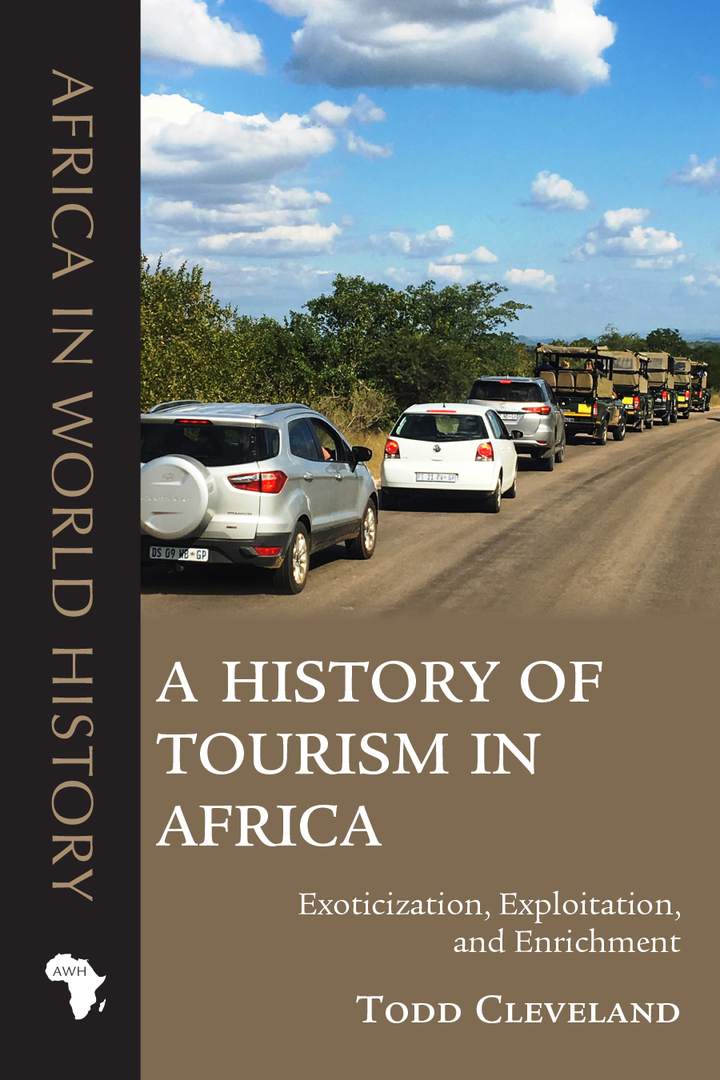
A History of Tourism in Africa: Exoticization, Exploitation, and Enrichment
An engaging social history of foreign tourists’ dreams, the African tourism industry’s efforts to fulfill them, and how both sides affect each other.
Since the nineteenth century, foreign tourists and resident tourism workers in Africa have mutually relied upon notions of exoticism, but from vastly different perspectives. Many of the countless tourists who have traveled to the African continent fail to acknowledge or even realize that skilled African artists in the tourist industry repeatedly manufacture “authentic” experiences in order to fulfill foreigners’ often delusional, or at least uninformed, expectations. These carefully nurtured and controlled performances typically reinforce tourists’ reductive impressions—formed over centuries—of the continent, its peoples, and even its wildlife. In turn, once back in their respective homelands, tourists’ accounts of their travels often substantiate, and thereby reinforce, prevailing stereotypes of “exotic” Africa. Meanwhile, Africans’ staged performances not only impact their own lives, primarily by generating remunerative opportunities, but also subject the continent’s residents to objectification, exoticization, and myriad forms of exploitation.
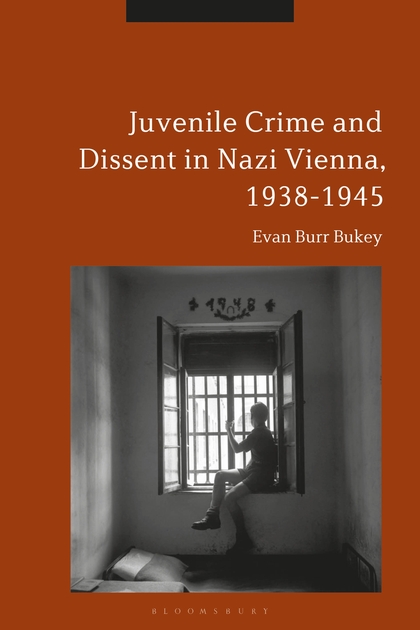
Juvenile Crime and Dissent in Nazi Vienna, 1938-1945
Drawing on a wealth of archival sources, Bukey's meticulous new study offers the definitive
account of juvenile crime in Nazi-era Vienna. In analyzing the records of juvenile
delinquency in Vienna during the Anschluss era, Bukey explores the impact the Juvenile Criminal Code had on the Viennese youth
who were brought before the bench for deviant behavior.
Juvenile Crime and Dissent in Nazi Vienna addresses one key question: to what extent did Nazi rule constitute a rupture in
the Austrian juvenile justice system? Ultimately this book reveals how, despite National
Socialist institutions pervading Austrian society between 1938 and 1945, the survival
of the indigenous legal order
preserved a sense of regional identity that helps to explain the success of the Second Austrian Republic following the collapse of the Third Reich.

Radicals in Exile: English Catholic Books During the Reign of Philip II
Facing persecution in early modern England, some Catholics chose exile over conformity. Some even cast their lot with foreign monarchs rather than wait for their own rulers to have a change of heart. This book studies the relationship forged by English exiles and Philip II of Spain. It shows how these expatriates, known as the “Spanish Elizabethans,” used the most powerful tools at their disposal—paper, pens, and presses—to incite war against England during the “messianic” phase of Philip’s reign, from the years leading up to the Grand Armada until the king’s death in 1598.
Domínguez looks at English Catholic propaganda within its international and transnational contexts. He examines a range of long-neglected polemical texts, demonstrating their prominence during an important moment of early modern politico-religious strife and exploring the transnational dynamic of early modern polemics and the flexible rhetorical approaches required by exile. He concludes that while these exiles may have lived on the margins, their books were central to early modern Spanish politics and are key to understanding the broader narrative of the Counter-Reformation.
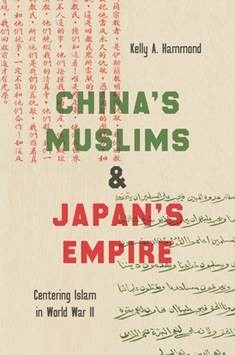
China's Muslims and Japan's Empire: Centering Islam in World War II
In this transnational history of World War II, Kelly A. Hammond places Sino-Muslims at the center of imperial Japan’s challenges to Chinese nation-building efforts. Revealing the little-known story of Japan’s interest in Islam during its occupation of North China, Hammond shows how imperial Japanese aimed to defeat the Chinese Nationalists in winning the hearts and minds of Sino-Muslims, a vital minority population. Offering programs that presented themselves as protectors of Islam, the Japanese aimed to provide Muslims with a viable alternative—and, at the same time, to create new Muslim consumer markets that would, the Japanese hoped, act to subvert the existing global capitalist world order and destabilize the Soviets.
This history can be told only by reinstating agency to Muslims in China who became active participants in the brokering and political jockeying between the Chinese Nationalists and the Japanese Empire. Hammond argues that the competition for their loyalty was central to the creation of the ethnoreligious identity of Muslims living on the Chinese mainland. Their wartime experience ultimately helped shape the formation of Sino-Muslims’ religious identities within global Islamic networks, as well as their incorporation into the Chinese state, where the conditions of that incorporation remain unstable and contested to this day.
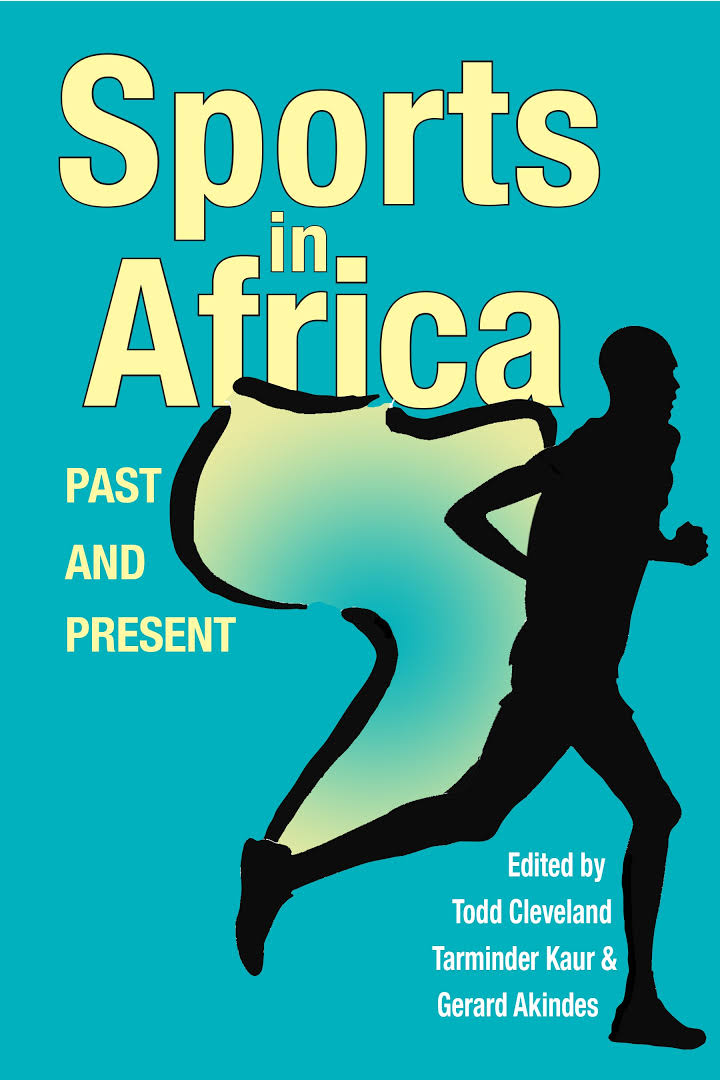
Sports in Africa, Past and Present
Since the late nineteenth century, modern sports in Africa have both reflected and shaped cultural, social, political, economic, generational, and gender relations on the continent. Although colonial powers originally introduced European sports as a means of “civilizing” indigenous populations and upholding then current notions of racial hierarchies and “muscular Christianity,” Africans quickly appropriated these sporting practices to fulfill their own varied interests. This collection encompasses a wide range of topics, including women footballers in Nigeria, Kenya’s world-class long-distance runners, pitches and stadiums in communities large and small, fandom and pay-to-watch kiosks, the sporting diaspora, sports pedagogy, sports as resistance and as a means to forge identity, sports heritage, the impact of politics on sports, and sporting biography.
These groundbreaking essays demonstrate how Africans past and present have utilized sports to forge complex identities and shape Africa’s dynamic place in the world.

Colonial Kinship: Guarani, Spaniards, and Africans in Paraguay
In Colonial Kinship: Guaraní, Spaniards, and Africans in Paraguay, historian Shawn Michael Austin uses an ethnographic lens of analysis to trace the history of conquest and colonization in Paraguay during the sixteenth and seventeenth centuries. Emphasizing the social and cultural agency of Guaraní—one of the primary indigenous peoples of Paraguay—not only in Jesuit missions but also in colonial settlements and Indian pueblos scattered in and around the Spanish city of Asunción, Austin argues that interethnic relations and cultural change in Paraguay can only be properly understood through the Guaraní logic of kinship. In the colonial backwater of Paraguay, conquistadors were forced to marry into Guaraní families in order to acquire indigenous tributaries, thereby becoming “brothers-in-law” (tovajá) to Guaraní chieftains. This pattern of interethnic exchange infused colonial relations and institutions with Guaraní social meanings and expectations of reciprocity that forever changed Spaniards, African slaves, and their descendants. While disease, Catholic evangelization, and Spanish labor demands collectively precipitated transformative social and cultural changes among the Guaraní, Austin demonstrates that Guaraní of diverse social and political positions actively shaped colonial society along indigenous lines
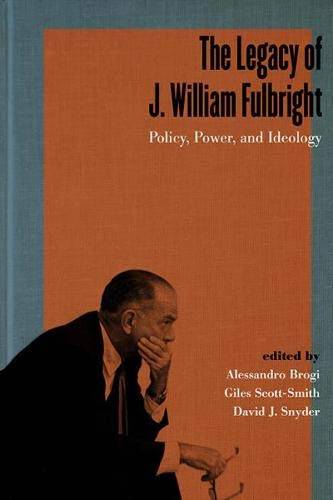
The Legacy of Fulbright: Policy, Power, and Ideology
This collection of essays details the political life of one of the most prominent and gifted American statesmen of the twentieth century. The authors bring a fresh international perspective to their evaluation of Senator Fulbright's signature accomplishment: the impactful cultural exchange programs that bear his name. But the authors also go much further to assess the entire liberal internationalist project that Fulbright helped inspire. Fair-minded and appropriately critical, with useful insights about the racial, gendered, and class dimensions of Fulbright's ideals and actions, the book is sure to stimulate lively debate. A must-read for anyone interested in the role of ideas, culture, and domestic politics in US foreign policy.

More Auspicious Shores: Barbadian Migration to Liberia, Blackness, and the Making of an African Republic
More Auspicious Shores chronicles the migration of Afro-Barbadians to Liberia. In 1865, 346 Afro-Barbadians fled a failed post-emancipation Caribbean for the independent black republic of Liberia. They saw Liberia as a means of achieving their post-emancipation goals and promoting a pan-Africanist agenda while simultaneously fulfilling their 'civilizing' and 'Christianizing' duties. Through a close examination of the Afro-Barbadians, Banton provides a transatlantic approach to understanding the political and sociocultural consequences of their migration and settlement in Africa. Banton reveals how, as former British subjects, Afro-Barbadians navigated an inherent tension between ideas of pan-Africanism and colonial superiority. Upon their arrival in Liberia, an English imperial identity distinguished the Barbadians from African Americans and secured them privileges in the Republic's hierarchy above the other group. By fracturing assumptions of a homogeneous black identity, Banton ultimately demonstrates how Afro-Barbadian settlement in Liberia influenced ideas of blackness in the Atlantic World.

William Livingston's American Revolution
William Livingston's American Revolution explores how New Jersey's first governor experienced the American Revolution and managed a state government on the war's front lines. A wartime bureaucrat, Livingston played a pivotal role in a pivotal place, prosecuting the war on a daily basis for eight years. Such second-tier founding fathers as Livingston were the ones who actually administered the war and guided the day-to-day operations of revolutionary-era governments, serving as the principal conduits between the local wartime situation and the national demands placed on the states.
In the first biography of Livingston published since the 1830s, James J. Gigantino's examination is as much about the position he filled as about the man himself. The reluctant patriot and his roles as governor, member of the Continental Congress, and delegate to the Constitutional Convention quickly became one, as Livingston's distinctive personality molded his office's status and reach. A tactful politician, successful lawyer, writer, satirist, political operative, gardener, soldier, and statesman, Livingston became the longest-serving patriot governor during a brutal war that he had not originally wanted to fight or believed could be won. Through Livingston's life, Gigantino examines the complex nature of the conflict and the choice to wage it, the wartime bureaucrats charged with administering it, the constant battle over loyalty on the home front, the limits of patriot governance under fire, and the ways in which wartime experiences affected the creation of the Constitution.
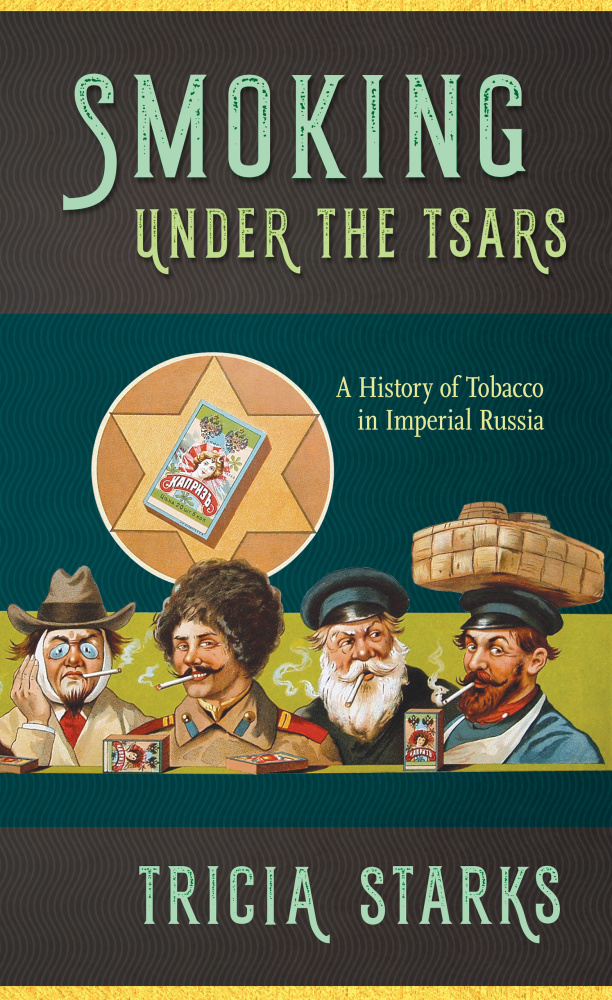
Smoking Under the Tsars: A History of Tobacco in Imperial Russia
Approaching tobacco from the perspective of users, producers, and objectors, Smoking under the Tsars provides an unparalleled view of Russia’s early adoption of smoking. Tricia Starks introduces us to the addictive, nicotine-soaked Russian version of the cigarette—the papirosa—and the sensory, medical, social, cultural, and gendered consequences of this unique style of tobacco use.
Starting with the papirosa’s introduction in the nineteenth century and its foundation as a cultural and imperial construct, Starks situates the cigarette’s emergence as a mass-use product of revolutionary potential. She discusses the papirosa as a moral and medical problem, tracks the ways in which it was marketed as a liberating object, and concludes that it has become a point of increasing conflict for users, reformers, and purveyors.
The heavily illustrated Smoking under the Tsars taps into bountiful material in newspapers, industry publications, etiquette manuals, propaganda posters, popular literature, memoirs, cartoons, poetry, and advertising. Starks frames her history within the latest scholarship in imperial and early Soviet history and public health, anthropology and addiction studies. The result is an ambitious social and cultural exploration of the interaction of institutions, ideas, practice, policy, consumption, identity, and the body. Starks has reconstructed how Russian smokers experienced, understood, and presented their habit in all its biological, psychological, social, and sensory inflections, providing the reader with incredible images and a unique application of anthropology and sensory analysis to the experience of tobacco dependency.
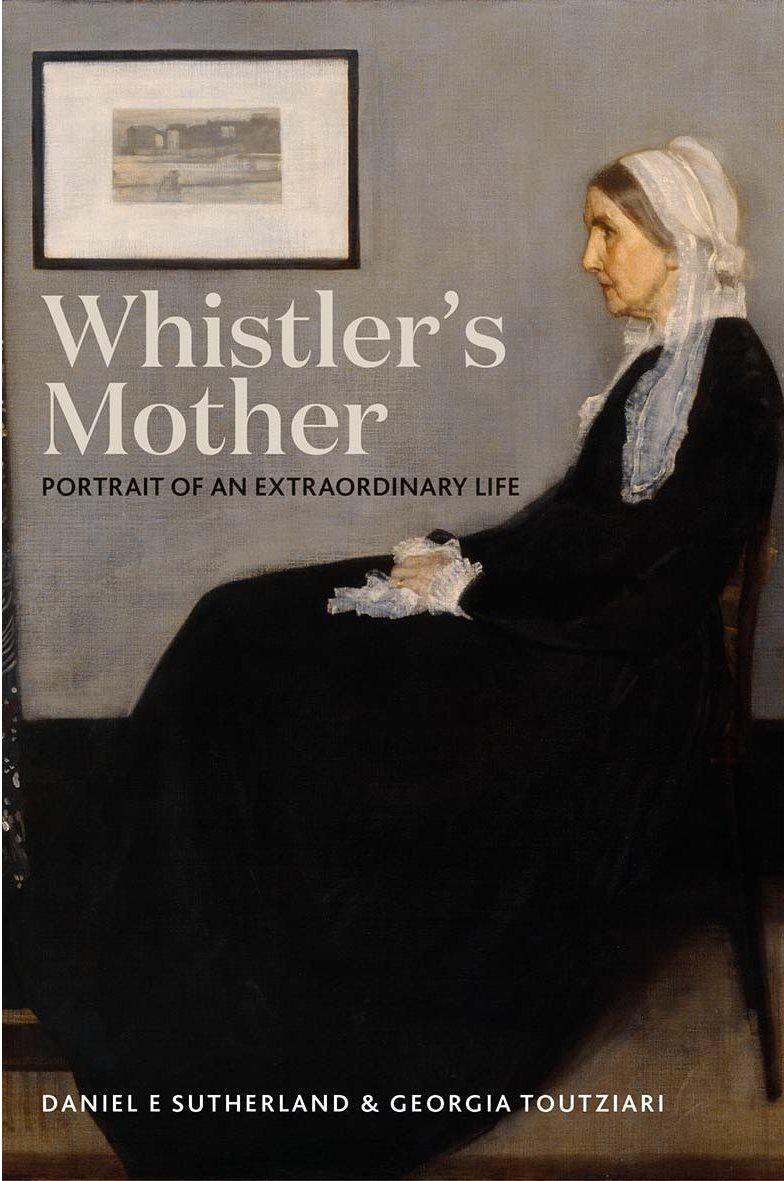
Whistler's Mother: Portrait of an Extraordinary Life
Judged by the portrait Arrangement in Gray and Black No. 1 (1871), painted by her son James McNeill Whistler, Anna Whistler (1804–1881) appears to have been a pious, unassuming, domestic woman. This characterization, however, is far from the whole truth. Anna was born in the slaveholding South, raised principally in Brooklyn, New York, and resided for many years in both Russia and Great Britain, and her life was filled with adventure and excitement. The authors’ unprecedented use of her private diaries and correspondence results in a crisp biographical rendering that reveals a resilient, vibrant, bright, and deeply engaged woman. In her writings, Anna made shrewd observations about the social, cultural, artistic, and political issues of her era, which was one of enormous and near-constant change. She knew and interacted with an astonishing array of people, from Russian peasants and American farmers to Robert E. Lee and Giuseppe Mazzini. She also raised one of the finest artists of the nineteenth century. As her son made his way in the art world, Anna became his unofficial agent, promoting his work, managing his finances, and advising him on the best opportunities for success. That he, in turn, should immortalize her as a global celebrity and international icon of motherhood was only appropriate.
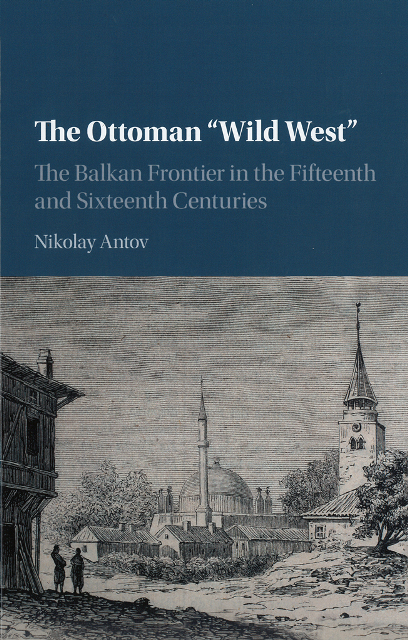
The Ottoman "Wild West": The Balkan Frontier in the Fifteenth and Sixteenth Centuries
In the late fifteenth century, the north-eastern Balkans were under-populated and under-institutionalized. Yet, by the end of the following century, the regions of Deliorman and Gerlovo were home to one of the largest Muslim populations in southeast Europe. Nikolay Antov sheds fresh light on the mechanics of Islamization along the Ottoman frontier, and presents an instructive case study of the 'indigenization' of Islam – the process through which Islam, in its diverse doctrinal and socio-cultural manifestations, became part of a distinct regional landscape. Simultaneously, Antov uses a wide array of administrative, narrative-literary, and legal sources, exploring the perspectives of both the imperial center and regional actors in urban, rural, and nomadic settings, to trace the transformation of the Ottoman polity from a frontier principality into a centralized empire. Contributing to the further understanding of Balkan Islam, state formation and empire building, this unique text will appeal to those studying Ottoman, Balkan, and Islamic world history.

What the Doctor Overheard: Dr. Leopold Müller's Account of Music in Early Meiji Japan
Despite their significance, the writings on Japanese music by Prussian medical scientist and physician Leopold Müller, published in Yokohama in a series from 1874 to1876, have been nearly forgotten and marginalized even in historical research on the courtly gagaku traditions they focus upon. This study with full translation into both English and Japanese illuminates and reassesses Müller’s pioneering contribution. It situates the essay-series historically in the light of an important line of thought about the evolution of ancient gagaku that arose only in the mid-twentieth century, as well as more widely for nearer their actual publication in relation to the emerging scientifically based 19th-century European scholarly discourse of “other” musics. It reveals the author, founder of the Medical Academy in Tokyo and personal physician to the Meiji Emperor, as an important man of his day both in Japan and back at home. And it proposes that, with the recent rise of interest in the medical humanities and a musicological call for embracing the cognitive-scientific along with the historical and ethnographical, Müller’s firsthand observations of a foreign music made from the practical body-orientated approach and ethnographic pen of a medical scientist ought also find new resonance nowadays.
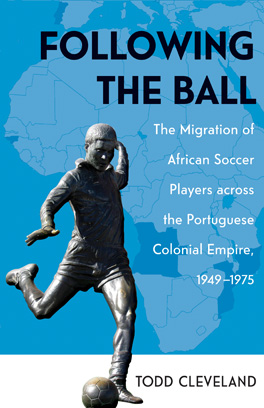
Following the Ball: The Migration of African Soccer Players across the Portuguese Colonial Empire, 1949-1975
With Following the Ball, Todd Cleveland incorporates labor, sport, diasporic, and imperial history to examine
the extraordinary experiences of African football players from Portugal’s African
colonies as they relocated to the metropole from 1949 until the conclusion of the
colonial era in 1975. The backdrop was Portugal’s increasingly embattled Estado Novo
regime, and its attendant use of the players as propaganda to communicate the supposed
unity of the metropole and the colonies.
Cleveland zeroes in on the ways that players, such as the great Eusébio, creatively
exploited opportunities generated by shifts in the political and occupational landscapes
in the waning decades of Portugal’s empire. Drawing on interviews with the players
themselves, he shows how they often assumed roles as social and cultural intermediaries
and counters reductive histories that have depicted footballers as mere colonial pawns.
To reconstruct these players’ transnational histories, the narrative traces their
lives from the informal soccer spaces in colonial Africa to the manicured pitches
of Europe, while simultaneously focusing on their off-the-field challenges and successes.
By examining this multi-continental space in a single analytical field, the book unearths
structural and experiential consistencies and contrasts, and illuminates the components
and processes of empire.

Death in the City: Suicide and the Social Imaginary in Modern Mexico
At the turn of the twentieth century, many observers considered suicide to be a worldwide social problem that had reached epidemic proportions. In Mexico City, violent deaths in public spaces were commonplace in a city undergoing rapid modernization. Crime rates mounted, corpses piled up in the morgue, and the media reported on sensational cases of murder and suicide. More troublesome still, a compelling death wish appeared to grip women and youth. Drawing on a range of sources from judicial records to the popular press, Death in the City investigates the cultural meanings of self-destruction in modern Mexico. Sloan examines responses to suicide and death and disproves the long-held belief that Mexicans possess a cavalier attitude toward suffering.
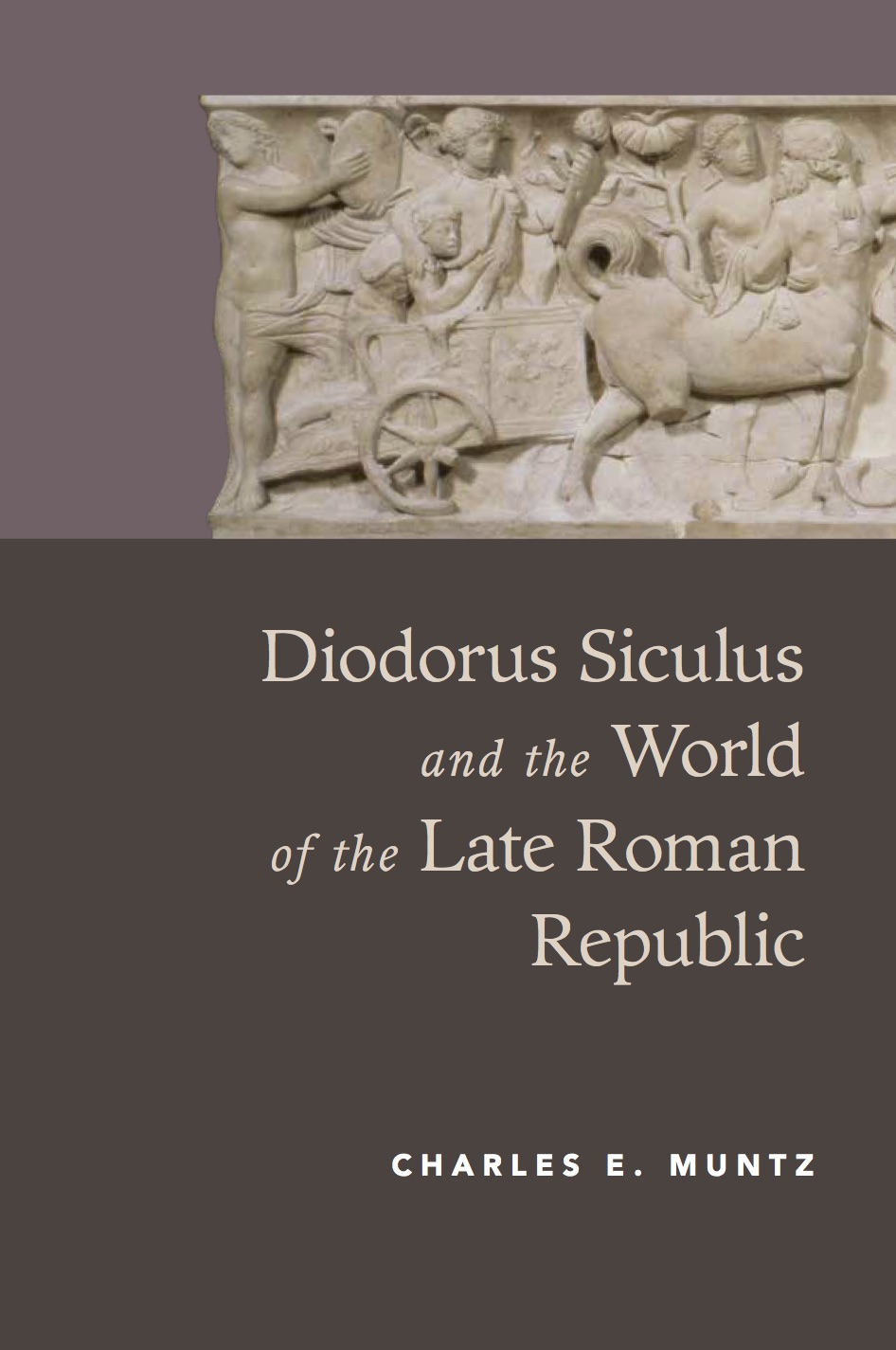
Diodorus Siculus and the World of the Late Roman Republic
In Diodorus Siculus and the World of the Late Roman Republic, Charles E. Muntz offers a fresh look at one of the most neglected historians of the ancient world, and recovers Diodorus’s originality and importance as a witness to a profoundly tumultuous period in antiquity. Muntz analyzes the first three books of Diodorus’s Bibliotheke, some of the most varied and eclectic material in his work, in which Diodorus reveals through the history, myths, and customs of the “barbarians” the secrets of successful states and rulers, and contributes to the debates surrounding the transition from Republic to Empire. Muntz establishes just how linked the “barbarians” of the Bibliotheke are to the actors of the crumbling Republic, and demonstrates that through the medium of the ancient Egyptians, Assyrians, Indians, and others Diodorus engages with the major issues and intellectual disputes of his time, including the origins of civilization, the propriety of ruler-cult, the benefits of monarchy, and the relationship between myth and history. Diodorus has many similarities with other authors writing on these topics, including Cicero, Lucretius, Varro, Sallust, and Livy but, as Muntz argues, engaging with such controversial issues, even indirectly, could be especially dangerous for a Greek provincial such as Diodorus. Indeed, for these reasons he may never have completed or fully published the Bibliotheke in his lifetime. Through his careful and precise investigations, Muntz demonstrates Diodorus’s historical context at its full size and scope.
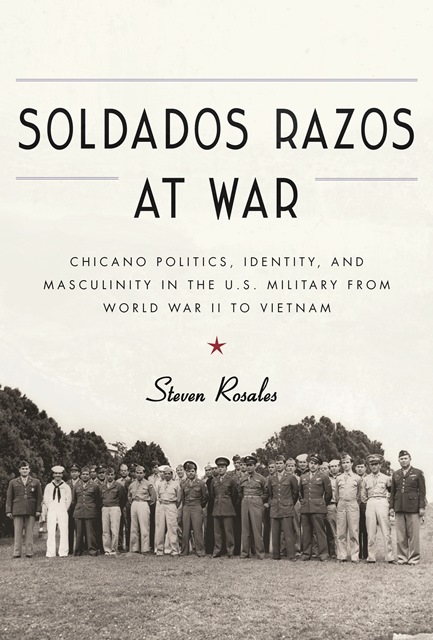
Soldados Razos at War: Chicano Politics, Identity, and Masculinity in the U.S. Military from World War II to Vietnam
What were the catalysts that motivated Mexican American youth to enlist or readily accept their draft notices in World War II, Korea, or Vietnam? In Soldados Razos at War, historian and veteran Steven Rosales chronicles the experiences of Chicano servicemen who fought for the United States, explaining why these men served, how they served, and the impact of their service on their identity and political consciousness.
As a social space imbued with its own martial and masculine ethos, the U.S. military
offers an ideal way to study the aspirations and behaviors that carried over into
the civilian lives of these young men. A tradition of martial citizenship forms the
core of the book. Using rich oral histories and archival research, Rosales investigates
the military's transformative potential with a particular focus on socioeconomic mobility,
masculinity, and postwar political activism across three generations.
The national collective effort characteristic of World War II and Korea differed sharply
from the highly divisive nature of American involvement in Vietnam. Thus, for Mexican
Americans, military service produced a wide range of ideological reactions, with the
ideals of each often in opposition to the others. Yet a critical thread connecting
these diverse outcomes was a redefined sense of self and a willingness to engage in
individual and collective action to secure first-class citizenship.
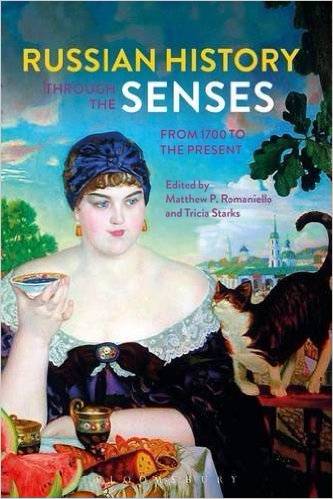
Russian History through the Senses: From 1700 to the Present
Bringing together an impressive cast of well-respected scholars in the field of modern Russian studies, Russian History through the Senses investigates life in Russia from 1700 to the present day via the senses. It examines past experiences of taste, touch, smell, sight and sound to capture a vivid impression of what it was to have lived in the Russian world, so uniquely placed as it is between East and West, during the last three hundred years.
The book discusses the significance of sensory history in relation to modern Russia and covers a range of exciting case studies, rich with primary source material, that provide a stimulating way of understanding modern Russia at a visceral level.
Russian History through the Senses is a novel text that is of great value to scholars and students interested in modern Russian studies.
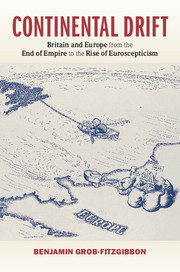
Continental Drift: Britain and Europe from the End of Empire to the Rise of Euroscepticism
In the aftermath of the Second World War, Churchill sought to lead Europe into an integrated union, but just over seventy years later, Britain is poised to vote on leaving the EU. Benjamin Grob-Fitzgibbon here recounts the fascinating history of Britain's uneasy relationship with the European continent since the end of the war. He shows how British views of the United Kingdom's place within Europe cannot be understood outside of the context of decolonization, the Cold War, and the Anglo-American relationship. At the end of the Second World War, Britons viewed themselves both as the leaders of a great empire and as the natural centre of Europe. With the decline of the British Empire and the formation of the European Economic Community, however, Britons developed a Euroscepticism that was inseparable from a post-imperial nostalgia. Britain had evolved from an island of imperial Europeans to one of post-imperial Eurosceptics.
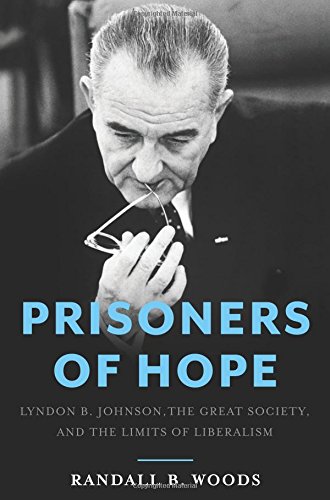
Prisoners of Hope: Lyndon B. Johnson, The Great Society, and the Limits of Liberalism
President Lyndon Johnson’s Great Society was breathtaking in its scope and dramatic in its impact. Over the course of his time in office, Johnson passed over one thousand pieces of legislation designed to address an extraordinary array of social issues. Poverty and racial injustice were foremost among them, but the Great Society included legislation on issues ranging from health care to immigration to education and environmental protection. But while the Great Society was undeniably ambitious, it was by no means perfect. In Prisoners of Hope, prize-winning historian Randall B. Woods presents the first comprehensive history of the Great Society, exploring both the breathtaking possibilities of visionary politics, as well as its limits.
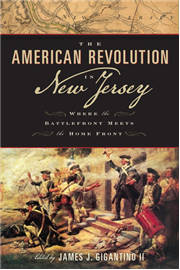
The American Revolution in New Jersey: Where the Battlefront Meets the Home Front
Battles were fought in many colonies during the American Revolution, but New Jersey was home to more sustained and intense fighting over a longer period of time. The nine essays in The American Revolution in New Jersey, depict the many challenges New Jersey residents faced at the intersection of the front lines and the home front.
Unlike other colonies, New Jersey had significant economic power in part because of its location between the major ports of New York and Philadelphia. New people and new ideas arriving in the colony fostered tensions between Loyalists and Patriots that were at the core of the Revolution. Enlightenment thinking shaped the minds of New Jersey’s settlers as they began to question the meaning of freedom in the colony. Yeoman farmers demanded ownership of the land they worked on and members of the growing Quaker denomination decried the evils of slavery and spearheaded the abolitionist movement in the state. When larger portions of New Jersey were occupied by British forces early in the war, the unity of the state was crippled, pitting neighbor against neighbor for seven years.
The essays in this collection identify and explore the interconnections between the events on the battlefield and the daily lives of ordinary colonists during the Revolution. Using a wide historical lens, the contributors to The American Revolution in New Jersey capture the decades before and after the conflict as they interpret the causes of the war and the consequences of New Jersey’s reaction to the Revolution.
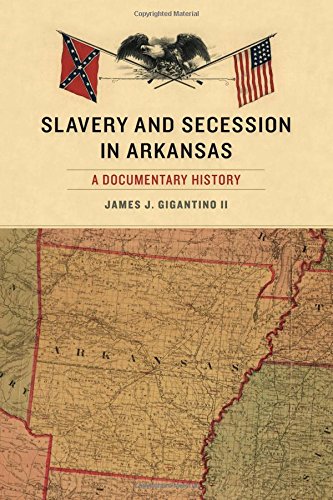
Slavery and Secession in Arkansas: A Documentary History
The absorbing documents collected in Slavery and Secession in Arkansas trace Arkansas’s tortuous road to secession and war. Drawn from contemporary pamphlets, broadsides, legislative debates, public addresses, newspapers, and private correspondence, these accounts show the intricate twists and turns of the political drama in Arkansas between early 1859 and the summer of 1861. From an early warning of what Republican political dominance would mean for the South, through the initial rejection of secession, to Arkansas’s final abandonment of the Union, readers, even while knowing the eventual outcome, will find the journey both suspenseful and informative.
Revealing both the unique features of the secession story in Arkansas and the issues that Arkansas shared with much of the rest of the South, this collection illustrates how Arkansans debated their place in the nation and, specifically, how the defense of slavery—as both an assurance of continued economic progress and a means of social control—remained central to the decision to leave the Union and fight alongside much of the South for four bloody years of civil war.

Diamonds in the Rough: Corporate Paternalism and African Professionalism on the Mines of Colonial Angola, 1917-1975
Diamonds in the Rough explores the lives of African laborers on Angola’s diamond mines from the commencement of operations in 1917 to the colony’s independence from Portugal in 1975. The mines were owned and operated by the Diamond Company of Angola, or Diamang, which enjoyed exclusive mining and labor concessions granted by the colonial government. Through these monopolies, the company became the most profitable enterprise in Portugal’s African empire. After a tumultuous initial period, the company’s mines and mining encampments experienced a remarkable degree of stability, in striking contrast to the labor unrest and ethnic conflicts that flared in other regions. Even during the Angolan war for independence (1961–75), Diamang’s zone of influence remained comparatively untroubled.
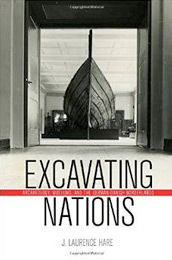
Excavating Nations: Archaeology, Museums, and the German-Danish Borderlands
Excavating Nations: Archaeology, Museums, and the German-Danish Borderlands examines the efforts of archaeologists and amateur antiquarians from Germany and Denmark to investigate the ancient past of the contested borderlands and appropriate its legacy for nationalist ends. Hare investigates four generations of the cross-border network of academics and scholars beginning in the early 19th century, through the unification of Germany, and the two world wars. Drawing on archival research in Germany and Denmark, Professor Hare’s book offers a transnational analysis of national building.
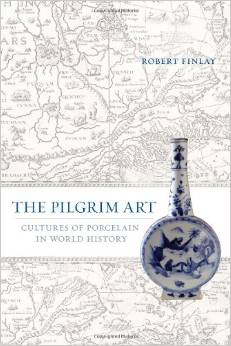
The Pilgrim Art: Cultures of Porcelain in World History
Professor Emeritus of History, Robert Finlay’s book The Pilgrim Art just published in Chinese by Hainan Publishing House. Congratulations Dr. Finlay! Just think of the royalties if just 1 in 10,000 Chinese citizens buy a copy! The book is on temporary display in the History office.
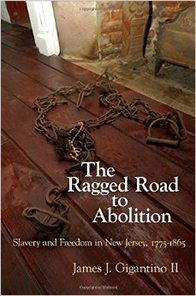
The Ragged Road to Abolition: Slavery and Freedom in New Jersey, 1775-1865
Professor James Gigantino has just published The Ragged Road to Abolition: Slavery and Freedom in New Jersey, 1775-1865 with the University of Pennsylvania Press. His new book challenges the existing historiography in a number of ways.
Contrary to popular perception, slavery persisted in the North well into the nineteenth
century. This was especially the case in New Jersey, the last northern state to pass
an abolition statute, in 1804. Because of the nature of the law, which freed children
born to enslaved mothers only after they had served their mother's master for more
than two decades, slavery continued in New Jersey through the Civil War. Passage of
the Thirteenth Amendment in 1865 finally destroyed its last vestiges.
The Ragged Road to Abolition chronicles the experiences of slaves and free blacks,
as well as abolitionists and slaveholders, during slavery's slow northern death. Abolition
in New Jersey during the American Revolution was a contested battle, in which constant
economic devastation and fears of freed blacks overrunning the state government limited
their ability to gain freedom. New Jersey's gradual abolition law kept at least a
quarter of the state's black population in some degree of bondage until the 1830s.
The sustained presence of slavery limited African American community formation and
forced Jersey blacks to structure their households around multiple gradations of freedom
while allowing New Jersey slaveholders to participate in the interstate slave trade
until the 1850s. Slavery's persistence dulled white understanding of the meaning of
black freedom and helped whites to associate "black" with "slave," enabling the further
marginalization of New Jersey's growing free black population.
By demonstrating how deeply slavery influenced the political, economic, and social life of blacks and whites in New Jersey, this illuminating study shatters the perceived easy dichotomies between North and South or free states and slave states at the onset of the Civil War.

I Do Wish This Cruel War Was Over: First-Person Accounts of Civil War Arkansas from the Arkansas Historical Quarterly
Edited by Mark K. Christ and Patrick G. Williams, I Do Wish This Cruel War Was Over (University of Arkansas Press, 2014) offer a first-hand, ground-level view of the war’s horrors, its mundane hardships, its pitched battles and languid stretches, even its moments of frivolity. The book collects diaries, letters and memoirs excerpted from their original publication in the Arkansas Historical Quarterly, which has been published since 1942 by the Arkansas Historical Association. The book’s readers will find varying degrees of commitment and different motivations among soldiers on both sides, along with the perspective of civilians. In many cases, these documents address aspects of the war that would become objects of scholarly and popular fascination only years after their initial appearance: the guerrilla conflict that became the “real war” west of the Mississippi; the “hard war” waged against civilians long before William Tecumseh Sherman set foot in Georgia; the work of women in maintaining households in the absence of men; and the complexities of emancipation, which saw African Americans winning freedom and sometimes losing it all over again.
The book’s readers will find varying degrees of commitment and different motivations among soldiers on both sides, along with the perspective of civilians. In many cases, these documents address aspects of the war that would become objects of scholarly and popular fascination only years after their initial appearance: the guerrilla conflict that became the “real war” west of the Mississippi; the “hard war” waged against civilians long before William Tecumseh Sherman set foot in Georgia; the work of women in maintaining households in the absence of men; and the complexities of emancipation, which saw African Americans winning freedom and sometimes losing it all over again.
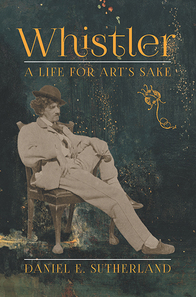
Whistler: A Life for Art's Sake
The first biography in more than twenty years of James McNeill Whistler (1834–1903) is also the first to make extensive use of the artist’s private correspondence to tell the story of his life and work. This engaging personal history dispels the popular notion of Whistler as merely a combative, eccentric, and unrelenting publicity seeker, a man as renowned for his public feuds with Oscar Wilde and John Ruskin as for the iconic portrait of his mother. The Whistler revealed in these pages is an intense, introspective, and complex man, plagued by self-doubt and haunted by an endless pursuit of perfection in his painting and drawing.
In his beautifully illustrated and deeply human portrayal of the artist, Daniel E. Sutherland shows why Whistler was perhaps the most influential artist of his generation, and certainly a pivotal figure in the cultural history of the nineteenth century. Whistler comes alive through his own magnificent work and words, including the provocative manifestos that explained his bold artistic vision, sparked controversy in his own time, and resonate to this day.
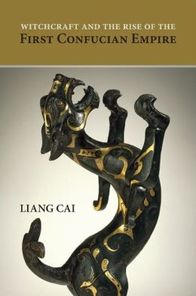
Witchcraft and the Rise of the First Confucian Empire
Professor Liang Cai's innovative book, Witchcraft and the Rise of the First Confucian Empire, has just been published as part of SUNY Press's illustrious series in Chinese Philosophy and Culture. When did Confucians become the reigning political ideology of imperial China? A pervasive narrative holds it was during the reign of Emperor Wu of the Han dynasty (141087 BCE). In this book, Liang Cai maintains that such a date would have been too early and provides a new account of this transformation. A hidden narrative in Sima Qian's The Grand Scribe's Records (Shi ji) shows that Confucians were a powerless minority in the political realm of this period. Cai argues that the notorious witchcraft scandal of 91-87 BCE reshuffled power structure of the Western Han bureaucracy and provided Confucians an opportune moment to seize power, evolve into a new elite class, and set the tenor of political discourse for centuries to come.
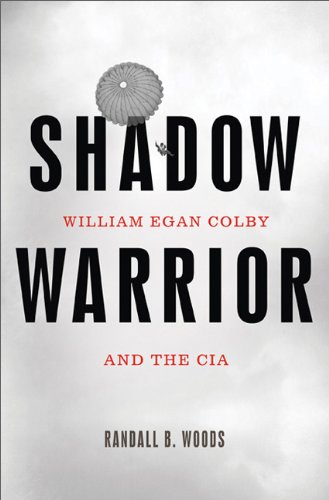
Secret Agent Man
World War II commando, Cold War spy, and CIA director under presidents Nixon and Ford, William Egan Colby played a critical role in some of the most pivotal events of the twentieth century. A quintessential member of the greatest generation, Colby embodied the moral and strategic ambiguities of the postwar world, and first confronted many of the dilemmas about power and secrecy that America still grapples with today.
In Shadow Warrior, eminent historian Randall B. Woods presents a riveting biography of Colby, revealing that this crusader for global democracy
was also drawn to the darker side of American power. Aiming to help reverse the spread
of totalitarianism in Europe and Asia, Colby joined the U.S. Army in 1941, just as
America entered World War II. He served with distinction in France and Norway, and
at the end of the war transitioned into America’s first peacetime intelligence agency:
the CIA. Fresh from the fight against fascism, Colby zealously redirected his efforts
against international communism. He insisted on the importance of fighting communism
on the ground, doggedly applying guerilla tactics for counterinsurgency, sabotage,
surveillance, and information-gathering on the new battlefields of the Cold War. Over
time, these strategies became increasingly ruthless; as head of the CIA’s Far East
Division, Colby oversaw an endless succession of assassination attempts, coups, secret
wars in Laos and Cambodia, and the Phoenix Program, in which 20,000 civilian supporters
of the Vietcong were killed. Colby ultimately came clean about many of the CIA’s illegal
activities, making public a set of internal reports—known as the “family jewels”—that
haunt the agency to this day. Ostracized from the intelligence community, he died
under suspicious circumstances—a murky ending to a life lived in the shadows.
Drawing on multiple new sources, including interviews with members of Colby’s family,
Woods has crafted a gripping biography of one of the most fascinating and controversial
figures of the twentieth century.
Advanced praise is rolling in for Shadow Warrior:
Publishers Weekly, starred review
“An engrossing account of Colby’s contentious life and career, from early intelligence
recruit during the Second World War to his suspicious demise in the Chesapeake Bay....
Scathingly critical of both the CIA and the government it served, Woods’ thoroughly
entertaining portrait reveals plenty of warts, as well as a thoughtful character,
surprisingly liberal and sophisticated about the limitations of CIA derring-do.”
Kirkus Reviews
“A thorough biography of ‘the ultimate subversive’ that probes the shadowy U.S. intelligence
efforts through the Vietnam War.... Woods looks at a complicated individual who was
at heart a liberal activist, schooled in the ideas of unconventional warfare championed
by his father, a military man and instructor.... A nuanced treatment.”
Library Journal
“Woods has crafted an excellent biography based on the usual primary sources and
buttressed by interviews with Colby’s family and associates.... Well written and researched,
this solid biography by an established historian is worthy of recommendation to all
interested readers.”
Richard H. Immerman, Professor and Edward J. Buthusiem Family Distinguished Faculty
Fellow in History, Temple University
“Randall Woods has written the biography that William Colby deserves. Colby, whose
30-year career in US intelligence began as a Jedburgh in the OSS, ended as Director
of the Central Intelligence Agency, and featured the Phoenix program and the Family
Jewels, lived and died a mystery. Woods’s prodigious research and engaging exposition
provide a textured portrait of a means-justify-the-ends patriot whose beliefs and
behavior complicate the narrative of America from the origins to the height of the
Cold War.”
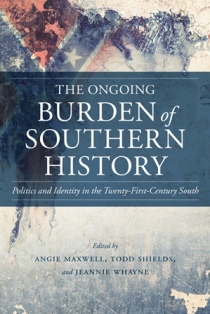
Southern Anthem
Three U of AR Historians Contribute to a Volume on the Legacy of Southern Historian C. Vann Woodward. Professor Jeannie M. Whayne is co-editor with colleagues in Political Science Professors Angie Maxwell and Todd Shields of a recently released volume from LSU Press on the multidisciplinary legacy of historian C. Vann Woodward: The Ongoing Burden of Southern History (release date: November 2012). More than fifty years after its initial publication, C. Vann Woodward’s landmark work, The Burden of Southern History, remains an essential text on the southern past. Today, a “southern burden” still exists, but its shape and impact on southerners and the world varies dramatically from the one envisioned by Woodward. Recasting Woodward’s ideas on the contemporary South, the contributors to The Ongoing Burden of Southern History highlight the relevance of his scholarship for the twenty-first-century reader and student.
Whayne, Maxwell, and Shields co-wrote the Preface: “Why Woodward Still Matters”
History’s experts on American Populism, Southern History, and African American politics Professors Robert C. McMath and Patrick G. Williams contributed cutting-edge chapters:
McMath, “The History of the Present”
Williams, “Woodward’s Losers: Disappearing Democrats in Southern Political History”
Other contributors: Josephine A. V. Allen, Charles S. Bullock III, James C. Cobb,
Donald R. Deskins Jr., Leigh Anne Duck, Wayne Parent, Sherman C. Puckett, Hanes Walton
Jr.
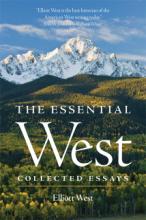
Wild Wild West
Alumni Distinguished Professor of History Elliott West has just published a superb collection of essays with the University of Oklahoma Press: The Essential West: Collected Essays. Capitalizing on West’s wide array of interests, this collection of his essays touches on topics ranging from viruses and the telegraph to children, bison, and Larry McMurtry. Drawing from the past three centuries, West weaves the western story into that of the nation and the world beyond, from Kansas and Montana to Haiti, Africa, and the court of Louis XV. Divided into three sections, the volume begins with conquest. West is not the first historian to write about Lewis and Clark, but he is the first to contrast their expedition with Mungo Park’s contemporaneous journey in Africa. “The Lewis and Clark expedition,” West begins, “is one of the most overrated events in American history—and one of the most revealing.” The humor of this insightful essay is a chief characteristic of the whole book, which comprises ten chapters previously published in major journals and magazines—but revised for this edition—and four brand-new ones. Foreword penned by Richard White (Margaret Byrne Professor of History at Stanford University).
Advanced Praise for The Essential West:
“Calling this book a collection of essays makes as much sense as calling the Rocky
Mountains a collection of rocks. On the contrary, The Essential West is a collection of riveting stories, original reflections, witty aphorisms, innovative
perspectives, and insights that go straight to the heart—of the West and of the reader.”
—Patricia Nelson Limerick, author of The Legacy of Conquest: The Unbroken Past of the American West
“No one has written about western history with more insight, compassion, wisdom, and
wit than Elliott West. Everything he writes is worth reading, and these essays are
West at his best.”
—Virginia Scharff co-author of Home Lands: How Women Made the West
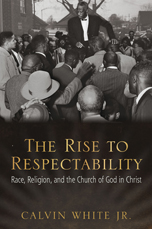
R-E-S-P-E-C-T
The Rise to Respectability (University of Arkansas Press, 2012) documents the history of the Church of God in Christ (COGIC) and examines its cultural and religious impact on African Americans and on the history of the South. It explores the ways in which Charles Harrison Mason, the son of slaves and founder of COGIC, embraced a Pentecostal faith that celebrated the charismatic forms of religious expression that many blacks had come to view as outdated, unsophisticated, and embarrassing. While examining the intersection of race, religion, and class, The Rise to Respectability details how the denomination dealt with the stringent standard of bourgeois behavior imposed on churchgoers as they moved from southern rural areas into the urban centers in both the South and North. Rooted in the hardships of slavery and coming of age during Jim Crow, COGIC’s story is more than a religious debate. Rather, this book sees the history of the church as interwoven with the Great Migration, the struggle for modernity, class tension, and racial animosity—all representative parts of the African American experience.
Calvin White, Jr. is assistant professor of history and director of the African and African American Studies Program at the University of Arkansas. He teaches African American and southern history.
“In his prudently revisionist account of the early career of Charles H. Mason and
the origins of the Church of God in Christ, Calvin White Jr. shows that the church
has on several key occasions tentatively engaged worldly concerns, including opposition
to World War I, social-uplift missionary efforts in Africa, and cautious cooperation
with Dr. King in the Memphis garbage workers strike of 1968. A valuable addition to
the historiography of COGIC.”
—John B. Boles, Rice University
“Uncovers a great deal of valuable historical data and provides one of the very few
full-length examinations of the most important group in black Pentecostalism.”
—Paul Harvey, author of Through the Storm, Through the Night: A History of African American Christianity
“A complex, important, and amazing story of religion, race, class, civil rights, and
history. Required reading for all serious students of the black church.”
—Reginald F. Hildebrand, author of The Times Were Strange and Stirring: Methodist Preachers and the Crisis of Emancipation
“A timely and valuable contribution to the fields of African American history, religious
studies, and southern history. White’s work sheds light on the dynamic interplay between
religion, class dynamics, race, culture, and evolving notions of uplift and conformity.
Will be enjoyed by readers of all levels and interests.”
—Charles W. McKinney Jr., author of Greater Freedom: The Evolution of the Civil Rights Struggle in Wilson, North Carolina
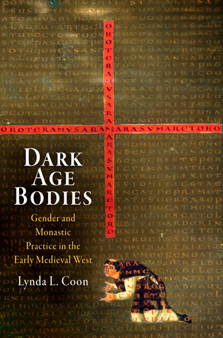
It's Raining Men
In Dark Age Bodies: Gender and Monastic Practice in the Early Medieval West Professor Lynda L. Coon, chair of the department of history, reconstructs the gender ideology of monastic masculinity through an investigation of early medieval readings of the body. Focusing on the Carolingian era, Coon evaluates the ritual and liturgical performances of monastic bodies within the imaginative landscapes of same-sex ascetic communities in northern Europe. She demonstrates how the priestly body plays a significant role in shaping major aspects of Carolingian history, such as the revival of classicism, movements for clerical reform, and church-state relations. In the political realm, Carolingian churchmen consistently exploited monastic constructions of gender to assert the power of the monastery. Stressing the superior qualities of priestly virility, clerical elites forged a model of gender that sought to feminize lay male bodies through a variety of textual, ritual, and spatial means.
Focusing on three central themes -- the body, architecture, and ritual practice -- the book draws from a variety of visual and textual materials, including poetry, grammar manuals, rhetorical treatises, biblical exegesis, monastic regulations, hagiographies, illuminated manuscripts, building plans, and cloister design. Interdisciplinary in scope, Dark Age Bodies brings together scholarship in architectural history and cultural anthropology with recent works in religion, classics, and gender to present a significant reconsideration of Carolingian culture.
Julia Smith, Edwards Professor of Medieval History at the University of Glasgow, praises the invention of Coon, saying "Dark Age Bodies stands the conventional view of early medieval monasticism on its head. It displaces commonplaces that monks were desexualized, ascetic, and celibate beings whose life, ideologies, and material surroundings were gender-free. Coon brilliantly deploys the rich array of recent sophisticated studies of Roman sex and gender, especially masculinities, to argue that western, specifically Benedictine, monasticism was predicated on same-sex hierarchies."
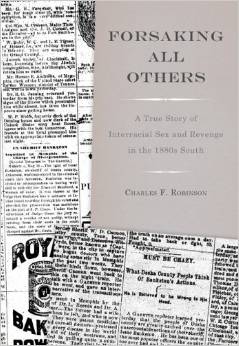
Everlasting love
Charles Robinson, historian and Vice Provost for Diversity at the U of AR, has just published Forsaking All Others: A True Story of Interracial Sex and Revenge in the 1880s South with the University of Tennessee Press. An intensely dramatic true story, Forsaking All Others recounts the fascinating case of an interracial couple who attempted - in defiance of society‛s laws and conventions - to formalize their relationship in the post-Reconstruction South. It was an affair with tragic consequences, one that entangled the protagonists in a miscegenation trial and, ultimately, a desperate act of revenge.
From the mid-1870s to the early 1880s, Isaac Bankston was the proud sheriff of Desha County, Arkansas, a man so prominent and popular that he won five consecutive terms in office. Although he was married with two children, around 1881 he entered into a relationship with Missouri Bradford, an African American woman who bore his child. Some two years later, Missouri and Isaac absconded to Memphis, hoping to begin a new life there together. Although Tennessee lawmakers had made miscegenation a felony, Isaac‛s dark complexion enabled the couple to apply successfully for a marriage license and take their vows. Word of the marriage quickly spread, however, and Missouri and Isaac were charged with unlawful cohabitation. An attorney from Desha County, James Coates, came to Memphis to act as special prosecutor in the case. Events then took a surprising turn as Isaac chose to deny his white heritage in order to escape conviction. Despite this victory in court, however, Isaac had been publicly disgraced, and his sense of honor propelled him into a violent confrontation with Coates, the man he considered most responsible for his downfall.
Charles F. Robinson uses Missouri and Isaac‛s story to examine key aspects of post-Reconstruction society, from the rise of miscegenation laws and the particular burdens they placed on anyone who chose to circumvent them, to the southern codes of honor that governed both social and individual behavior, especially among white men. But most of all, the book offers a compelling personal narrative with important implications for our supposedly more tolerant times.
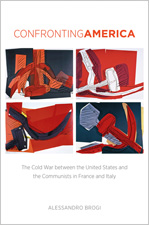
Cold War
Professor Alessandro Brogi‘s forthcoming book, Confronting America: The Cold War between the United States and Communists in France and Italy, will be published by the University of North Carolina Press in July 2011. Throughout the Cold War, the United States encountered unexpected challenges from Italy and France, two countries with the strongest, and determinedly most anti-American, Communist Parties in Western Europe.
Based primarily on new evidence from communist archives in France and Italy, as well as research archives in the United States, Brogi‘s original study reveals how the United States was forced by political opposition within these two core Western countries to reassess its own anticommunist strategies, its image, and the general meaning of American liberal capitalist culture and ideology. Brogi shows that the resistance to Americanization was a critical test for the French and Italian communists‘ own legitimacy and existence. Their anti-Americanism was mostly dogmatic and driven by the Soviet Union, but it was also, at crucial times, subtle and ambivalent, nurturing fascination with the American culture of dissent. The staunchly anticommunist United States, Brogi argues, found a successful balance to fighting the communist threat in France and Italy by employing diplomacy and fostering instances of mild dissent in both countries. Ultimately, both the French and Italian communists failed to adapt to the forces of modernization that stemmed both from indigenous factors and from American influence. Confronting America illuminates the political, diplomatic, economic, and cultural conflicts behind the U.S.-communist confrontation.
Advance praise for Confronting America:
- “Alessandro Brogi‘s impressively researched and convincingly argued book will furnish
readers with a comparative dimension from the recent past for today‘s varieties of
anti-Americanism. Confronting America is an extraordinary work of scholarship and deserves the highest praise.”
Richard Drake, University of Montana
- “The struggle that emerged in Western Europe--specifically in France and Italy--with
the onset of the Cold War is the subject of this sound and original analysis. Particularly
striking is its demonstration of the vigor and efficiency of the Communist propaganda
operation.”
Charles Cogan, Harvard University

Masters of War
The story of the British Empire in the twentieth century is one of decline, disarray, and despondency. Or so we have been told. In this fresh and controversial account of Britain‘s end of empire, Grob-Fitzgibbon rejects this consensus, showing instead that in the years 1945-1960 the British government developed a successful imperial strategy based on devolving power to indigenous peoples within the Commonwealth. This strategy was calculated to allow decolonization to occur on British terms rather than those of the indigenous populations, and to thus keep these soon-to-be former colonies within the British and Western spheres of influence during the Cold War. To achieve this new form of informal liberal imperialism, however, the government had to rely upon the use of illiberal dirty wars. Spanning the globe from Palestine to Malaya, Kenya to Cyprus, these dirty wars represented Britain's true imperial endgame.
Pre-Publication Praise for Imperial Endgame:
- “Grob-Fitzgibbon challenges the popular view that Britain shed its empire politely,
like a tea party at the vicarage in an Agatha Christie mystery. He makes it clear
that the reality was very different. Withdrawal from empire was difficult, dangerous
and dirty and the politicians, diplomats, soldiers and policemen who brought empire
to an end did so in a way not brought out as powerfully and persuasively before. For
anyone worried about how things might end in Iraq or Afghanistan, Grob-Fitzgibbon‘s
excellent, dispassionate, forensic analysis will make uncomfortable but illuminating
reading.”
Colonel Alex Alderson, MBE, Director of the United Kingdom Counterinsurgency Centre
- “Imperial Endgame is a controversial and important book. Benjamin Grob-Fitzgibbon has no time for conventional
pieties. Junking the tired story of disarray and humiliation, he shows how Britain
ruthlessly disposed of the Empire on its own unsentimental terms. This strategy often
involved dirty tactics and dirty wars but the objective was clear: to keep newly-independent
states within Britain‘s sphere of influence. It‘s a bold re-telling of the decolonisation
story, pulled off with great style and panache.”
Richard Aldous, author of The Lion and the Unicorn, and Eugene Meyer Professor of British History and Literature at Bard College, New York, USA.
- “The end of the British Empire was characterized not only be relatively smooth transitions
to independence but also by the winning of independence by violent means of insurgency.
Imperial Endgame is an excellent history of the British counter-insurgency campaigns
marking the end of colonial rule, above all in Palestine, Malaya, Kenya, Cyprus, and
Aden.”
Wm. Roger Louis, Kerr Chair in English History and Culture at the University of Texas at Austin, and Editor-in-Chief of The Oxford History of the British Empire.
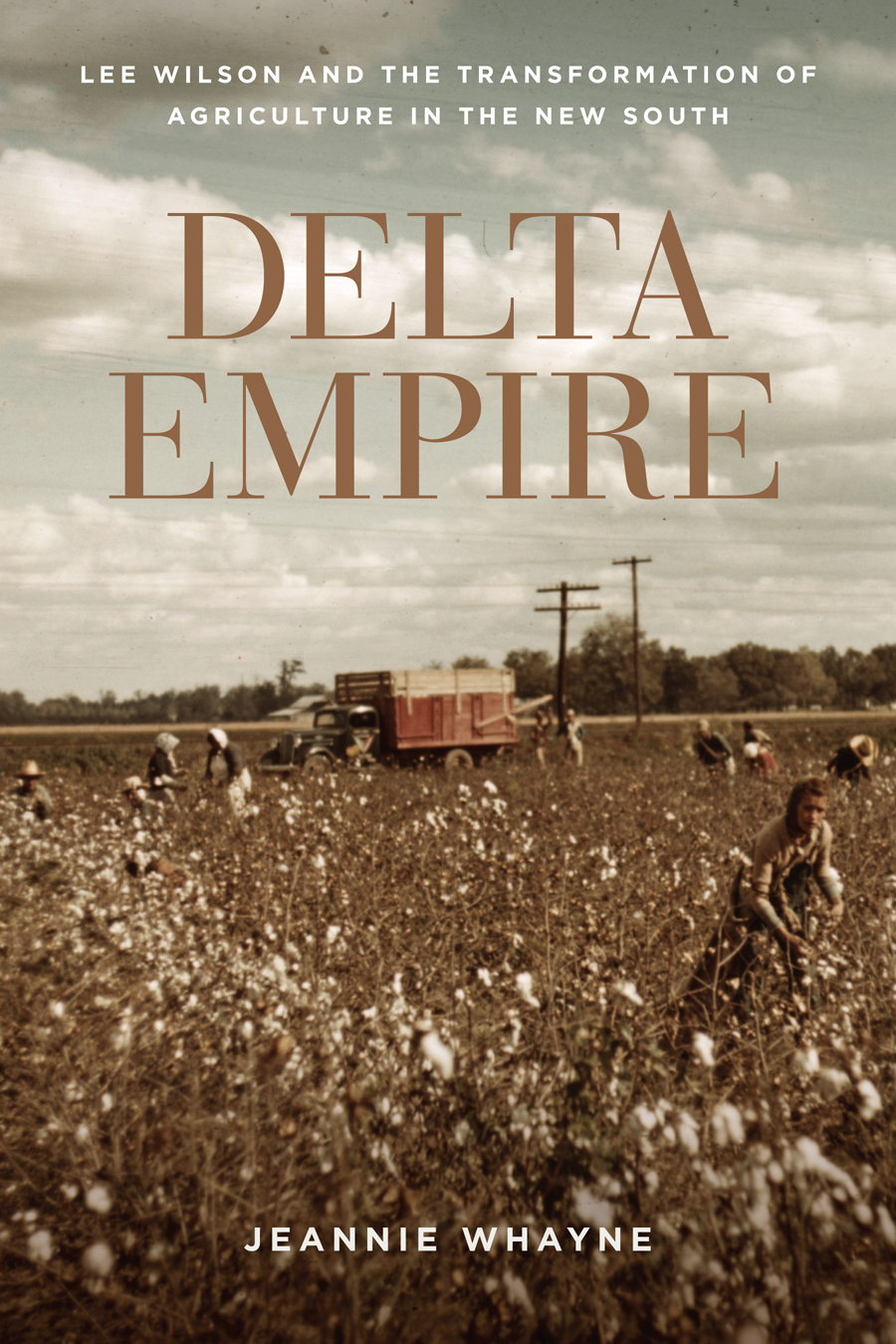
Delta Dawn
In Delta Empire, Jeannie Whayne employs the fascinating history of a powerful plantation owner in the Arkansas delta to recount the evolution of southern agriculture from the late nineteenth century through World War II.
After his father’s death in 1870, Robert E. “Lee” Wilson inherited 400 acres of land in Mississippi County, Arkansas. Over his lifetime, he transformed that inheritance into a 50,000-acre lumber operation and cotton plantation. Early on, Wilson saw an opportunity in the swampy local terrain, which sold for as little as fifty cents an acre, to satisfy an expanding national market for Arkansas forest reserves. He also led the fundamental transformation of the landscape, involving the drainage of tens of thousands of acres of land, in order to create the vast agricultural empire he envisioned.
A consummate manager, Wilson employed the tenancy and sharecropping system to his advantage while earning a reputation for fair treatment of laborers, a reputation—Whayne suggests—not entirely deserved. He cultivated a cadre of relatives and employees from whom he expected absolute devotion. Leveraging every asset during his life and often deeply in debt, Wilson saved his company from bankruptcy several times, leaving it to the next generation to successfully steer the business through the challenges of the 1930s and World War II.
Delta Empire: Lee Wilson and the Transformation of Agriculture in the New South traces the transition from the labor-intensive sharecropping and tenancy system to the capital-intensive plantations of the post-World War II era. Through Wilson’s story Whayne provides a compelling case study of strategic innovation and the changing economy of the South in the late nineteenth century.

Paperback Writer
Cambridge University Press has released a paperback edition of emeritus historian William Tucker’s 2008 classic, Mahdis and Millenarians: Shiite Extremists in Early Muslim Iraq. Mahdis and Millenarians is a discussion of Shiite groups in eighth- and ninth-century Iraq and Iran, whose ideas reflected a mixture of indigenous non-Muslim religious teachings and practices in Iraq in the early centuries of Islamic rule. Tucker demonstrates the period’s fluidity of religious boundaries. Particular attention is given to the millenarian expectations and the revolutionary political activities of these sects. Specifically, it seeks to define the term ‘millenarian’, to explain how these groups reflect that definition, and to show how they need to be seen in a much larger context than Shiite or even Muslim history. The author concentrates, therefore, on the historical-sociological role of these movements. The thesis of the study is that they were the first revolutionary chiliastic groups in Islamic history and, combined with the later influence of some of their doctrines, contributed to the teachings of a number of subsequent Shiite or quasi-Shiite sectarian groups.
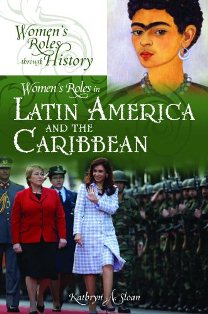
More than a Woman
Kathryn Sloan has just published Women’s Roles in Latin America and the Caribbean as part of ABC/CLIO’s innovative series entitled “Women’s Roles through History.” Women’s Roles in Latin America and the Caribbean commences with Queen Isabella of Spain (r. 1474-1504) and ends in the present-day, highlighting female political leaders such as Chile’s Michelle Bachelet and Brazil’s Dilma Rousseff. During this vibrant five-hundred year period, Sloan explores a diversity of topics and geographical spaces. Impressively, she surveys women’s labor, spirituality, and economic power in Latin America, Brazil, and the Spanish Caribbean island nations. She draws on an eclectic source-base: hagiography, chap books, newspapers, films, literature, and archival documents. Sloan writes provocatively about the multi-religious cultures of the region, from the cult of the Mesoamerican female deity Tonantzin to the heretical female adherents of the alumbradismo (“illuminists”) to modern female practitioners of Vodou and Santería. In the theatre of labor, Sloan considers women’s contribution to the work force in a variety of areas: weavers, midwives, healers, revolutionaries, entrepreneurs, artists, and writers. She also examines techniques of surveillance aimed at women’s bodies, from studies of female criminality to prostitution to discourses on honor and shame. In the realm of popular culture, Sloan offers her reader a splendid section on “Hispanic Barbie,” the slightly darker knock-off of the famous “Caucasian” doll re-packaged in a bi-lingual box and outfitted in full peasant garb. As Sloan points out, artists and leftists successfully subverted the image of “Hispanic Barbie” by creating films such as the classic Barbie Can Also Be Sad (Barbie también puede estar triste, 2001), which featured Mattel dolls in transgressive sexual roles.
Women’s Roles in Latin America and the Caribbean represents a significant—and gutsy—contribution to a series already boasting fine volumes on the Middle East, the U.S., and Europe.

Porcelain
With his newest book, The Pilgrim Art: Cultures of Porcelain in World History (University of California Press, 2010) Professor Robert Finlay details the exotic world of fine porcelain. This work explores the global cultural influence of Chinese porcelain from A. D. 600 to 1850.
For over a thousand years, porcelain was both the most universally admired and most widely imitated product in the world. It played a central role in cultural exchange in Eurasia as the prime material vehicle for the assimilation and transmission of artistic symbols themes, and designs across vast distances. The book examines the integration of Chinese porcelain in the cultures of Korea, Japan, Southeast Asia, India, the Middle East, and Europe. It treats porcelain as a barometer of human affairs, a commodity that registers the impact of artistic conventions, international trade, industrial development, political turmoil, elite expenditure, ceremonial rites, and cultural contact.
The Pilgrim Art demonstrates that by the eighteenth century, given its volume and circulation, porcelain yields the earliest and most extensive evidence for sustained cultural encounter on a world-wide scale, perhaps even for the emergence of the first genuinely global culture.

Sex Bomb
In his newest book, Richard Sonn argues that by the end of World War I, the conflict between anarchism and the state had largely been eclipsed by the competing forces of liberalism, fascism, and communism. To combat their slide into irrelevance, French anarchists, especially those called individualists, redirected their attentions from violent revolution and general strikes to ethical issues that focused on personal liberation. Chief among these issues was sexual freedom, meant not only for the sake of pleasure but to undermine the authoritarian family, bulwark of the patriarchal state. In this revelatory book, Sonn approaches the French anarchist movement during this period from a socio-cultural perspective, considering the relationship between anarchism and the artistic avant-garde and surrealism, political violence and terrorism, sexuality and sexual politics, and gender roles. He shows that, contrary to popular belief, anarchism in theory and practice played a significant role in the culture of interwar France.
Critical praise is already strong for Sonn's book. Rachel G. Fuchs, (Arizona State University) praises the book as “a fascinating work that will make an important contribution to studies of anarchism, politics, violence, immigration, and sexuality” and enthuses, “Sonn provides a refreshing new look at the relationship between gender and violence.”
Martin Jay (University of California, Berkeley) praises Sonn's depth of research, “Drawing on a wealth of new sources and a lifetime immersion in the history of European anarchism, Richard Sonn has fashioned a fresh and arresting account of the libertarian and libertine left in France between the wars. Unflinchingly acknowledging their more dubious passions, such as eugenics, he nonetheless provides us a sympathetic portrait of men and women dreaming of a better world, free of economic injustice, state tyranny and the repression of the body. Rather than a period of decline for anarchism, the interwar years in France, he shows us, were an era of renewal based on ethical principles and the repudiation of violence, whose echoes reverberated in the l960‘s and beyond.”
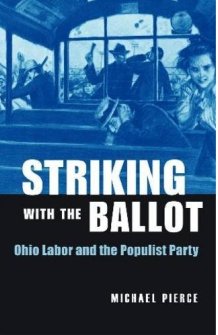
Talkin' Union
Professor Michael Pierce has published, with Northern Illinois University Press, his study of the connection between labor and populism in the late nineteenth century. Whereas historians have typically thought of Populism as a radical agrarian movement, Pierce argues that, in Ohio, Populism was an urban, not rural, movement and that industrial workers and trade unionists formed the core of the People's (or Populist) party. Through case studies of Cleveland, Cincinnati, and Columbus, Pierce examines the efforts of Ohio unions -- especially the United Mine Workers -- to protect the rights of workers, curb the abuses of corporations, and reform the state's and nation's government through an alliance with the People's party.
Striking with the Ballot focuses on the Crisis of the 1890s: when the Panic of 1893, the Pullman strike and boycott, the arrest of Debs, Coxey's march, and the failure of the nationwide coal strike threw the country into disarray. pierce demonstrates that trade unionists in Ohio, and throughout the Industrial Midwest, responded by mobilizing politically under the banner of the People's party. Support for the People's party was so strong among the nation's trade unionists that Ohio's leading Populist, John McBride, wont the presidency of the American Federation of Labor in 1894. Ohio labor's reform agenda survived thes subsequent collapse of the People's party and informed labor's political activity through the Progressive era. Pierce offers a provocative new narrative for those interested in labor history, Populism, Progressivism, and Ohio history.

Music Man
Professor Rembrandt Wolpert, historian of Tang China and ethnomusicologist,and Wu Man, world-renowned pipa virtuoso, have collaborated on an international CD devoted to the art of the solo-pipa, a lute-like Chinese stringed instrument that has been played since the Qin and Han dynasties (221-BC -- 220AD). The CD entitled Immeasurable Light was released September15.
Wolpert, Professor in the Department of History of the Fulbright College of Arts and Sciences and director of the Center for the Study of Early Asian and Middle Eastern Musics, is a leading expert on the musical cultures of pre-modern China, ca. 600 --1300. Wolpert and Wu have been working on Immeasurable Light for twelve years. Through painstaking research of music for pipa preserved in scrolls at various places on the ancient Silk Road from the Buddhist caves of Dunhuang in Central Asia to the Imperial and aristocratic libraries in early Japan at the other end of that route, Professor Wolpert has deciphered and transnotated music from ancient tablature for musical pieces dating back as far as the sixth century C.E.
Wu Man is a principal member of Yo-Yo Ma‘s Silk Road Project. She performs all the pipa parts on Immeasurable Light and sings and plays vocals on some tracks. The Kronos Quartet, internationally known for their experimental and world-musics repertory, joins Wu on two tracks. The pieces on the CD -- dating from the sixth to twelfth centuries -- include prayers, dances, and shadow puppetry items as well as Wu Man‘s original compositions. Through these, Wu Man explores the pipa's sonic capabilities playing with a bow, a ”prepared‘ pipa (in the manner of John Cage‘s experiments with piano), and over-dubbing.
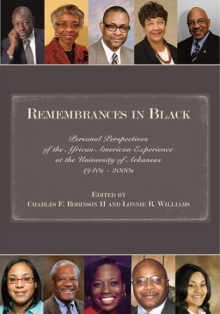
Try to Remember
Historian Charles F. Robinson has just published a co-edited volume entitled Remembrances in Black: Personal Perspectives of the African American Experience at the University of Arkansas, 1940s-2000s with the University of Arkansas Press. Seventy-eight oral histories are included in the book, which also provides an appendix of interviewee biographies and a timeline. Remembrances is organized chronologically and begins with interviews from George W.B. Haley and Christopher C. Mercer Jr., each of whom entered the University of Arkansas School of Law in 1949, a year after Silas Hunt became the first African American student admitted to the university since reconstruction.
Charles F. Robinson is vice provost for diversity at the University of Arkansas, and his co-editor Lonnie R. Williams is associate vice chancellor for student affairs at Arkansas State University, Jonesboro. Williams is also an alumnus of the University of Arkansas education and business colleges.
Some of the interviewees included in the book are George Haley, former U.S. ambassador to Gambia; the late E. Lynn Harris, a best-selling author; Gene McKissic, who was the first African American student body president; Janis Kearney, author and former White House diarist for Bill Clinton; Gordon Morgan and Margaret Clark, the first African American faculty members; and Rod McDavis, the first African American dean of a college at the university.
According to Robinson, one unusual element of the black experience at the University of Arkansas is that it was the first southern institution to desegregate without threat of litigation. This voluntary desegregation unfortunately allowed the university a slower pace at achieving real integration because the institution was not under the public scrutiny that other schools like the University of Alabama and Mississippi were.
“Athletics is a good example,” Robinson said. “Despite the fact that Silas Hunt registered for campus in 1948, the UA did not have its first African American scholarship football player take the field until 1970. The University of Alabama, forced to desegregate in 1963, had its first black football scholarship athlete in 1971.”
Memories, positive and negative, are still potent for the interviewees, according to Williams. He recalls speaking to Merike Manley, who was elected the first African American homecoming queen in 1982. In addition to several other slights, she recalls that the vote was conducted three times, a parade was cancelled and her election was blatantly under publicized. “The pain of how she was treated is still very much alive in her today,” Williams said.
Publication of Remembrances in Black was supported by the Gordon and Izola Morgan Publications Fund.
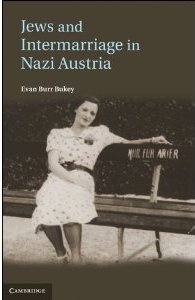
Love and Marriage
Evan Burr Bukey (emeritus) has just published Jews and Intermarriage in Nazi Austria with Cambridge University Press (release date: December 31, 2010). In Jews and Intermarriage, Professor Bukey explores the experience of intermarried couples - marriages with Jewish and non-Jewish partners - and their children in Vienna after Germany‘s seizure of Austria in 1938. These families coped with changing regulations that disrupted family life, pitted relatives against each other, and raised profound questions about religious, ethnic, and national identity. Bukey finds that although intermarried couples lived in a state of fear and anxiety, many managed to mitigate, delay, or even escape Nazi sanctions. Drawing on extensive archival research, his study reveals how hundreds of them pursued ingenious strategies to preserve their assets, to improve their ‘racial‘ status, and above all to safeguard the position of their children. It also analyzes cases of intermarried partners who chose divorce as well as persons involved in illicit liaisons with non-Jews. Jews and Intermarriage in Nazi Austria concludes that although most of Vienna‘s intermarried Jews survived the Holocaust, several hundred Jewish partners were deported to their deaths and children of such couples were frequently subjected to Gestapo harassment.
Advance praise from major scholars of the Nazi era underscores the centrality of Jews and Intermarriage to the field:
“Through his history of those tied by family bonds, Bukey lays bare how the Nazi regime challenged core values of western civilization: the family, parents‘ protection of their children, the mutual love and loyalty of husbands and wives. And he shows how those fathers, mothers, wives, and husbands negotiated that assault. Written with great sensitivity and passion, and grounded in impeccable research, Jews and Intermarriage in Nazi Austria is a superb new work.” Deborah Dwork, Clark University
“We have had only vague knowledge until now about the impact Nazi racist madness had on the private lives of Jews and intermarried couples in National Socialist Austria. Evan Burr Bukey went into Viennese archives, compiled exact statistics, and wrote a precise study about people who were forced to live in a state of enormous stress. He has reconstructed the fates of individuals and revealed thereby the whole gamut of human emotions: greed for money and assets, cowardice and betrayal, as well as loyalty to one's spouse, bravery, and moral courage. The result is an outstanding book, touching and sad, about people in extreme situations.” Ernst Hanisch, University of Salzburg
“Singlehandedly, Professor Bukey has produced the definitive history of persecution of Austrians of Jewish heritage from Anschluss in 1938 to 1945. After all, Vienna was home to the second largest concentration of Jews and ‘mixed marriages‘ in all of Hitler‘s Gross Deutsches Reich. Bukey‘s meticulous archival research and probing analyses present in detail how the Nazis imperiled the lives and marriages of hundreds of thousands of citizens while at the same time showing how sometimes individuals within that bureaucracy could blunt the worst of Nazi intentions. What Beate Meyer and Wolf Gruner have achieved in exposing Nazi persecution of intermarriages in Germany, Evan Bukey has matched with his exemplary history of intermarriages in Austria.” James F. Tent, University of Alabama at Birmingham

Porcelain
With his newest book, The Pilgrim Art: Cultures of Porcelain in World History (University of California Press, 2010) Professor Robert Finlay details the exotic world of fine porcelain. This work explores the global cultural influence of Chinese porcelain from A. D. 600 to 1850.
For over a thousand years, porcelain was both the most universally admired and most widely imitated product in the world. It played a central role in cultural exchange in Eurasia as the prime material vehicle for the assimilation and transmission of artistic symbols themes, and designs across vast distances. The book examines the integration of Chinese porcelain in the cultures of Korea, Japan, Southeast Asia, India, the Middle East, and Europe. It treats porcelain as a barometer of human affairs, a commodity that registers the impact of artistic conventions, international trade, industrial development, political turmoil, elite expenditure, ceremonial rites, and cultural contact.
The Pilgrim Art demonstrates that by the eighteenth century, given its volume and circulation, porcelain yields the earliest and most extensive evidence for sustained cultural encounter on a world-wide scale, perhaps even for the emergence of the first genuinely global culture.

Sex Bomb
In his newest book, Richard Sonn argues that by the end of World War I, the conflict between anarchism and the state had largely been eclipsed by the competing forces of liberalism, fascism, and communism. To combat their slide into irrelevance, French anarchists, especially those called individualists, redirected their attentions from violent revolution and general strikes to ethical issues that focused on personal liberation. Chief among these issues was sexual freedom, meant not only for the sake of pleasure but to undermine the authoritarian family, bulwark of the patriarchal state. In this revelatory book, Sonn approaches the French anarchist movement during this period from a socio-cultural perspective, considering the relationship between anarchism and the artistic avant-garde and surrealism, political violence and terrorism, sexuality and sexual politics, and gender roles. He shows that, contrary to popular belief, anarchism in theory and practice played a significant role in the culture of interwar France.
Critical praise is already strong for Sonn's book. Rachel G. Fuchs, (Arizona State University) praises the book as “a fascinating work that will make an important contribution to studies of anarchism, politics, violence, immigration, and sexuality” and enthuses, “Sonn provides a refreshing new look at the relationship between gender and violence.”
Martin Jay (University of California, Berkeley) praises Sonn's depth of research, “Drawing on a wealth of new sources and a lifetime immersion in the history of European anarchism, Richard Sonn has fashioned a fresh and arresting account of the libertarian and libertine left in France between the wars. Unflinchingly acknowledging their more dubious passions, such as eugenics, he nonetheless provides us a sympathetic portrait of men and women dreaming of a better world, free of economic injustice, state tyranny and the repression of the body. Rather than a period of decline for anarchism, the interwar years in France, he shows us, were an era of renewal based on ethical principles and the repudiation of violence, whose echoes reverberated in the l960‘s and beyond.”

Talkin' Union
Professor Michael Pierce has published, with Northern Illinois University Press, his study of the connection between labor and populism in the late nineteenth century. Whereas historians have typically thought of Populism as a radical agrarian movement, Pierce argues that, in Ohio, Populism was an urban, not rural, movement and that industrial workers and trade unionists formed the core of the People's (or Populist) party. Through case studies of Cleveland, Cincinnati, and Columbus, Pierce examines the efforts of Ohio unions -- especially the United Mine Workers -- to protect the rights of workers, curb the abuses of corporations, and reform the state's and nation's government through an alliance with the People's party.
Striking with the Ballot focuses on the Crisis of the 1890s: when the Panic of 1893, the Pullman strike and boycott, the arrest of Debs, Coxey's march, and the failure of the nationwide coal strike threw the country into disarray. pierce demonstrates that trade unionists in Ohio, and throughout the Industrial Midwest, responded by mobilizing politically under the banner of the People's party. Support for the People's party was so strong among the nation's trade unionists that Ohio's leading Populist, John McBride, wont the presidency of the American Federation of Labor in 1894. Ohio labor's reform agenda survived thes subsequent collapse of the People's party and informed labor's political activity through the Progressive era. Pierce offers a provocative new narrative for those interested in labor history, Populism, Progressivism, and Ohio history.

Music Man
Professor Rembrandt Wolpert, historian of Tang China and ethnomusicologist,and Wu Man, world-renowned pipa virtuoso, have collaborated on an international CD devoted to the art of the solo-pipa, a lute-like Chinese stringed instrument that has been played since the Qin and Han dynasties (221-BC -- 220AD). The CD entitled Immeasurable Light was released September15.
Wolpert, Professor in the Department of History of the Fulbright College of Arts and Sciences and director of the Center for the Study of Early Asian and Middle Eastern Musics, is a leading expert on the musical cultures of pre-modern China, ca. 600 --1300. Wolpert and Wu have been working on Immeasurable Light for twelve years. Through painstaking research of music for pipa preserved in scrolls at various places on the ancient Silk Road from the Buddhist caves of Dunhuang in Central Asia to the Imperial and aristocratic libraries in early Japan at the other end of that route, Professor Wolpert has deciphered and transnotated music from ancient tablature for musical pieces dating back as far as the sixth century C.E.
Wu Man is a principal member of Yo-Yo Ma‘s Silk Road Project. She performs all the pipa parts on Immeasurable Light and sings and plays vocals on some tracks. The Kronos Quartet, internationally known for their experimental and world-musics repertory, joins Wu on two tracks. The pieces on the CD -- dating from the sixth to twelfth centuries -- include prayers, dances, and shadow puppetry items as well as Wu Man‘s original compositions. Through these, Wu Man explores the pipa's sonic capabilities playing with a bow, a ”prepared‘ pipa (in the manner of John Cage‘s experiments with piano), and over-dubbing.

Try to Remember
Historian Charles F. Robinson has just published a co-edited volume entitled Remembrances in Black: Personal Perspectives of the African American Experience at the University of Arkansas, 1940s-2000s with the University of Arkansas Press. Seventy-eight oral histories are included in the book, which also provides an appendix of interviewee biographies and a timeline. Remembrances is organized chronologically and begins with interviews from George W.B. Haley and Christopher C. Mercer Jr., each of whom entered the University of Arkansas School of Law in 1949, a year after Silas Hunt became the first African American student admitted to the university since reconstruction.
Charles F. Robinson is vice provost for diversity at the University of Arkansas, and his co-editor Lonnie R. Williams is associate vice chancellor for student affairs at Arkansas State University, Jonesboro. Williams is also an alumnus of the University of Arkansas education and business colleges.
Some of the interviewees included in the book are George Haley, former U.S. ambassador to Gambia; the late E. Lynn Harris, a best-selling author; Gene McKissic, who was the first African American student body president; Janis Kearney, author and former White House diarist for Bill Clinton; Gordon Morgan and Margaret Clark, the first African American faculty members; and Rod McDavis, the first African American dean of a college at the university.
According to Robinson, one unusual element of the black experience at the University of Arkansas is that it was the first southern institution to desegregate without threat of litigation. This voluntary desegregation unfortunately allowed the university a slower pace at achieving real integration because the institution was not under the public scrutiny that other schools like the University of Alabama and Mississippi were.
“Athletics is a good example,” Robinson said. “Despite the fact that Silas Hunt registered for campus in 1948, the UA did not have its first African American scholarship football player take the field until 1970. The University of Alabama, forced to desegregate in 1963, had its first black football scholarship athlete in 1971.”
Memories, positive and negative, are still potent for the interviewees, according to Williams. He recalls speaking to Merike Manley, who was elected the first African American homecoming queen in 1982. In addition to several other slights, she recalls that the vote was conducted three times, a parade was cancelled and her election was blatantly under publicized. “The pain of how she was treated is still very much alive in her today,” Williams said.
Publication of Remembrances in Black was supported by the Gordon and Izola Morgan Publications Fund.

Love and Marriage
Evan Burr Bukey (emeritus) has just published Jews and Intermarriage in Nazi Austria with Cambridge University Press (release date: December 31, 2010). In Jews and Intermarriage, Professor Bukey explores the experience of intermarried couples - marriages with Jewish and non-Jewish partners - and their children in Vienna after Germany‘s seizure of Austria in 1938. These families coped with changing regulations that disrupted family life, pitted relatives against each other, and raised profound questions about religious, ethnic, and national identity. Bukey finds that although intermarried couples lived in a state of fear and anxiety, many managed to mitigate, delay, or even escape Nazi sanctions. Drawing on extensive archival research, his study reveals how hundreds of them pursued ingenious strategies to preserve their assets, to improve their ‘racial‘ status, and above all to safeguard the position of their children. It also analyzes cases of intermarried partners who chose divorce as well as persons involved in illicit liaisons with non-Jews. Jews and Intermarriage in Nazi Austria concludes that although most of Vienna‘s intermarried Jews survived the Holocaust, several hundred Jewish partners were deported to their deaths and children of such couples were frequently subjected to Gestapo harassment.
Advance praise from major scholars of the Nazi era underscores the centrality of Jews and Intermarriage to the field:
“Through his history of those tied by family bonds, Bukey lays bare how the Nazi regime challenged core values of western civilization: the family, parents‘ protection of their children, the mutual love and loyalty of husbands and wives. And he shows how those fathers, mothers, wives, and husbands negotiated that assault. Written with great sensitivity and passion, and grounded in impeccable research, Jews and Intermarriage in Nazi Austria is a superb new work.” Deborah Dwork, Clark University
“We have had only vague knowledge until now about the impact Nazi racist madness had on the private lives of Jews and intermarried couples in National Socialist Austria. Evan Burr Bukey went into Viennese archives, compiled exact statistics, and wrote a precise study about people who were forced to live in a state of enormous stress. He has reconstructed the fates of individuals and revealed thereby the whole gamut of human emotions: greed for money and assets, cowardice and betrayal, as well as loyalty to one's spouse, bravery, and moral courage. The result is an outstanding book, touching and sad, about people in extreme situations.” Ernst Hanisch, University of Salzburg
“Singlehandedly, Professor Bukey has produced the definitive history of persecution of Austrians of Jewish heritage from Anschluss in 1938 to 1945. After all, Vienna was home to the second largest concentration of Jews and ‘mixed marriages‘ in all of Hitler‘s Gross Deutsches Reich. Bukey‘s meticulous archival research and probing analyses present in detail how the Nazis imperiled the lives and marriages of hundreds of thousands of citizens while at the same time showing how sometimes individuals within that bureaucracy could blunt the worst of Nazi intentions. What Beate Meyer and Wolf Gruner have achieved in exposing Nazi persecution of intermarriages in Germany, Evan Bukey has matched with his exemplary history of intermarriages in Austria.” James F. Tent, University of Alabama at Birmingham
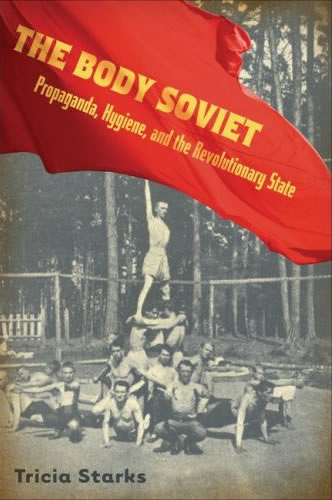
Splish Splash I Was Takin' A Bath
Dr. Trish Starks has published, The Body Soviet: Propaganda, Hygiene, and the Revolutionary State with the University of Wisconsin press. The book follows the tale of health and hygiene in the wake of revolution and social change in the Soviet Union. In 1918 the People‘s Commissariat of Public Health began a quest to protect the health of all Soviet citizens, but health became more than a political platform or tactical decision. The Soviets defined and categorized the world by interpreting political orthodoxy and citizenship in terms of hygiene. The assumed political, social, and cultural benefits of a regulated, healthy lifestyle informed the construction of Soviet institutions and identity. Cleanliness developed into a political statement that extended from domestic maintenance to leisure choices and revealed gender, ethnic, and class prejudices. Dirt denoted the past and poor politics; health and cleanliness signified mental acuity, political orthodoxy, and modernity.
Health, though essential to the revolutionary vision and crucial to Soviet plans for utopia, has been neglected by traditional histories caught up in Cold War debates. The Body Soviet recovers this significant aspect of Soviet thought by providing a cross-disciplinary, comparative history of Soviet health programs that draws upon rich sources of health care propaganda, including posters, plays, museum displays, films, and mock trials. The analysis of propaganda makes this more than an institutional history; it is also an insightful critique of the ideologies of the body fabricated by health organizations.
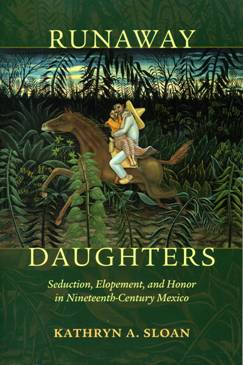
Girls Just Want to Have Fun
Against the backdrop of nineteenth-century Oaxaca City, Kathryn Sloan analyzes rapto trials -- cases of abduction and/or seduction of a minor -- to gain insight into the reality that testimonies by parents, their children, and witnesses reveal about courtship practices, generational conflict, the negotiation of honor, and the relationship between the state and its working-class citizens in postcolonial Mexico. Unlike the colonial era where paternal rule was absolute, Sloan found that the state increasingly usurped parental authority in the home with the introduction of nineteenth-century liberal reform laws. As these laws began to shape the terms of civil marriage, the courtroom played a more significant role in the resolution of familial power struggles and the restoration of family honor in rapto cases. Youths could now exert a measure of independence by asserting their rights to marry whom they wished. In examining these growing rifts between the liberal state and familial order within its lower order citizens, Sloan highlights the role that youths and the working class played in refashioning systems of marriage, honor, sexuality, parental authority, and filial obedience.

Losing my religion
Mahdis and Millenarians is a study of early extremist Shiites in Iraq and Iran. These sectarians originated certain doctrines and religious practices that influenced a number of later Shiite religious and political movements. Their millenarian expectations and willingness to use force against perceived enemies gave them a sense of solidarity and coherence that could be effectively mobilized in revolutionary or conflict situations. They should be viewed primarily within the context of world millenarian sectarian movements.

Smoke on the water
In Venice Besieged: Politics and Diplomacy in the Italian Wars, 1494-1534 (Ashgate Publishing, Great Britain, 2008), Professor Robert Finlay presents ten essays written between 1976 and 2000 that deal with common themes and personalities during crises experienced by the Republic of Venice between 1494 and 1534. The essays examine various episodes and dimensions of that time of troubles, including the impact of apocalyptic speculation on political action, the driving force behind the creation of the notorious creation of the Ghetto, the Venetian contribution to the infamous Sack of Rome in 1527, the links between the spice trade and military disaster, the significance of old age in the ruling class, the role of the family in patrician politics, and the Republic’s attempt to preserve itself in the great struggle between the Ottoman Turks and the Spanish-Habsburg Empire. A unifying theme of the essays is the contrast between the exalted reputation of the Republic (as seen in the famed “myth of Venice”) and the tangled reality of Venetian politics and diplomacy.

Turn...turn...turn
In his exploration of the use of intelligence in Ireland by the British government from the onset of the Ulster Crisis in 1912 to the end of the Irish War of Independence in 1921, Grob-Fitzgibbon analyzes the role that intelligence played during those critical nine years. He argues that within that period, the British government lost power in Ireland because it failed to utilize the intelligence it received. Through its indifference, the British government contributed to the turning points of the Irish Revolution, and allowed a bloody guerrilla war to develop that was far from inevitable.
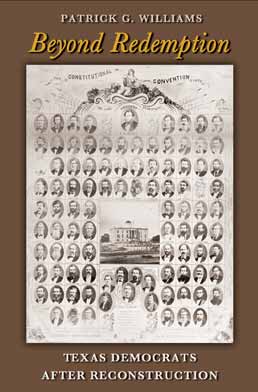
Deep in the heart of Texas
At the end of Reconstruction, the old order reasserted itself, to varying degrees, throughout the former Confederate states. This period--Redemption, as it was called--was crucial in establishing the structures and alliances that dominated the Solid South until at least the mid-twentieth century.
Texas shared in this, but because of its distinctive antebellum history, its western position within the region, and the large influx of new residents that poured across its borders, it followed its own path toward Redemption.
Now, historian Patrick G. Williams provides a dual study of the issues facing Texas Democrats as they rebuilt their party and of the policies they pursued once they were back in power. Treating Texas as a southern but also a western and a borderlands state, Williams has crafted a work with a richly textured awareness unlike any previous single study. Students of regional and political history will benefit from Williams' comprehensive view of this often overlooked, yet definitive era in Texas history.